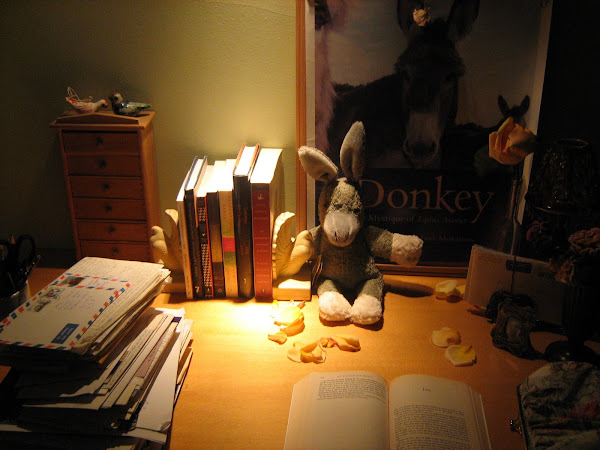 Perhaps the natural next step after fairy tales (see previous blog) is ghost stories.
Perhaps the natural next step after fairy tales (see previous blog) is ghost stories.
Ghosts too have their own evolution, from energies that gain physical shape only when draped in something material (like a sheet!); to apparitions haunting hallways; to the real-but-more-symbolic ghosts of books like Toni Morrison's Beloved.
It was Beloved that I turned to when puzzling out the ghosts of my novel Water Ghosts. Though I love a good, old-fashioned, moss-draped-oak-tree, gothic-style haunting (and my book's setting, the Sacramento Delta, lends itself well to that), I had a historical problem. I set out originally to write a book about Chinese women in early 20th century America.
But I discovered that there were few Chinese women during this time because of restrictive immigration laws. I then understood that there was a reason why stories of Chinese during this period tended to focus on the men.
Water Ghosts is set in Locke, California, an independent (unincorporated) all-Chinese town. During the 1920s, when the novel is set, men outnumbered women 20:1. That means in a population of 500, there were only 25 women. Many of these women, however, were white prostitutes.
How could I write about the “absence” of Chinese women and show that that absence loomed large, even defined life in Locke?
The old-fashioned way. Ghosts.
Ghosts are not only exciting story devices, but also lovely metaphors: placeholders, symbols of the longed-for object -- they are the presence still lingering in our hearts.
Ghosts remind me of the Chinese watercolor technique of "leaving whiteness," in which the unpainted areas become objects-- for example, the way painting a mountain around a stream of blank page can create a river.
Ghosts became a way to approach this historical and emotional absence. Richard Fong is a gambling hall manager who came to the US in 1918. He has worked his way up from a pear picker to manager. He has been separated from his wife, Ming Wai, for ten years, but one day she appears on a boat that emerges out of the fog. This what happens when he first approaches her on the dock as the rest of the town watches:
Richard feels as if they are all witnesses to his own funeral. Maybe he is already a ghost.
But the real ghost stands at the center, next to Manny. A faded, older version of Richard's wife, Ming Wai, whom he has not seen in ten years.
Ming Wai? he asks. He stiffens at the hope heard in his own voice, the falter in two syllables.
I'm sorry, she says. I don't deserve to look at you. The voice makes sense now. It breaks its way across time and his memory. It is Ming Wai.
However, ghosts don't work just as metaphors without some good eerie haunting to liven up the page! I've tried to throw in the iconic oak tree (called the Hangman's Tree--it has its own ghost), a fog-draped river, well-placed lightning bolts, a thunderstorm, people (?) in dark rooms.
Ghosts are no good without a few goose-bumps.
In the 1944 Modern Library collection Great Tales of Terror and the Supernatural, the epigraph, an old Scottish invocation, reads:
From Ghoulies and Ghosties
And Long-Legged Beasties
And Things that go Bump in the Night,
Good Lord Deliver us!
(The picture of Locke is from the Library of Congress collection.)
 Perhaps the natural next step after fairy tales (see previous blog) is ghost stories.
Perhaps the natural next step after fairy tales (see previous blog) is ghost stories. 
No comments:
Post a Comment